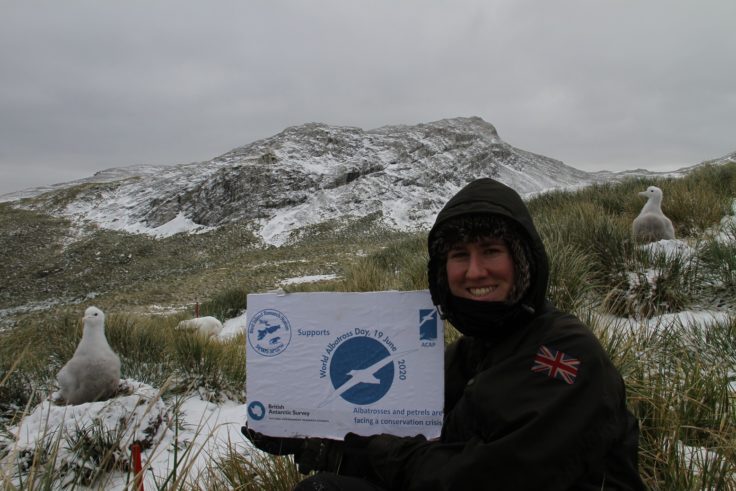Isolated winter fieldwork on Bird Island
17 June, 2020 Bird Island
Albatross zoological field assistant Alexandra Dodds shares experiences of the isolated winter fieldwork at British Antarctic Survey (BAS) Bird Island Research Station in South Georgia. The team are conducting important long-term science, monitoring the varied animal residents of the island.
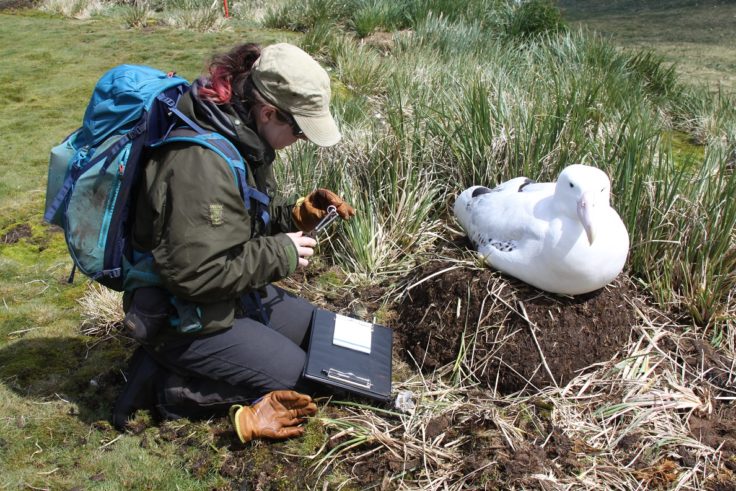
Living in isolation
During the austral winter three of the five BAS Antarctic stations are staffed; here at Bird Island, we are the smallest wintering team, made up of three zoological field assistants and one station technician – so we often feel the most isolated! The best description of wintering on Bird Island I have heard is; ‘That’s the closest you’ll get to being in outer space without leaving the planet!’ We are now deep in the midst of our winter season which spans from the last ship call in March until we see the RRS James Clark Ross on the horizon again in November.
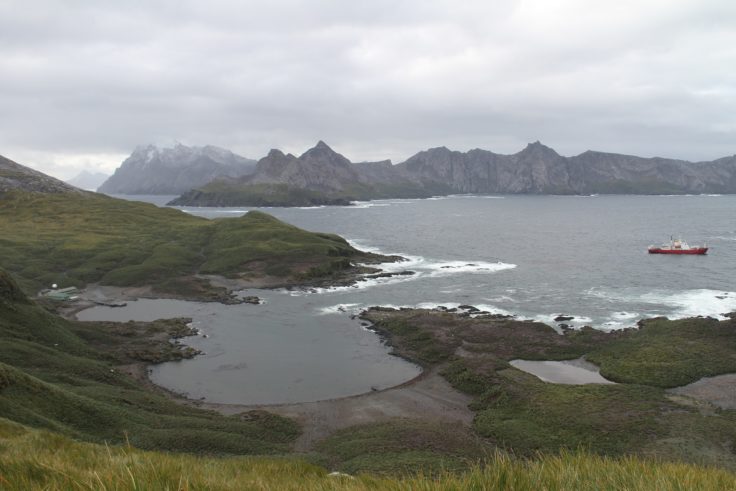
Continuing regular communication with friends and family back home has been important to the team, particularly to those with elderly relatives. We may be remote, but we still get post, with visiting ships delivering mail sacks from Stanley, Falkland Islands, albeit infrequently, throughout the year. Getting the mail is always a great morale boost!
At the end of last year, I wrote a blog for the Albatross Task Force about working with albatrosses and life on the island. It was coming up to peak breeding season for all of our animals. Now, during the austral winter, the island has a very different atmosphere.
The last of our mollymawk (medium sized species) albatross chicks fledged at the end of May, leaving behind eerily empty and silent albatross colonies. There are still a few southern giant petrel chicks getting ready to fledge so Freya is still checking their nests each week. The strangest bird colony to see empty and silent throughout winter is Big Mac, our largest macaroni penguin colony. But, while the macaroni penguins are out to sea for the winter, little gatherings of gentoo penguins come to the island for some respite in the evenings. The gentoos have even been joined by a chinstrap or two; a rare visitor here!

Now all of my mollymawk albatross colony fieldwork has come to an end, the data are being checked through and exported to the Cambridge Headquarters, and equipment from the season’s long-term monitoring work and collaborative research projects has been cleaned up and put back in storage. During winter, it’s all about the wandering albatross chicks!
If you follow the ‘#AlbatrossStories’ tag on social media you will have seen some of our charismatic wandering albatross chicks over the past weeks. The chicks are still here, and will be throughout the winter – they are the reason that Bird Island is never without baby animals! I check on the chicks on Wanderer Ridge, our main study area, every week and each month the whole team carries out an island-wide census, where everyone gets to have a day out around the island surveying these amazing winter fluffballs.
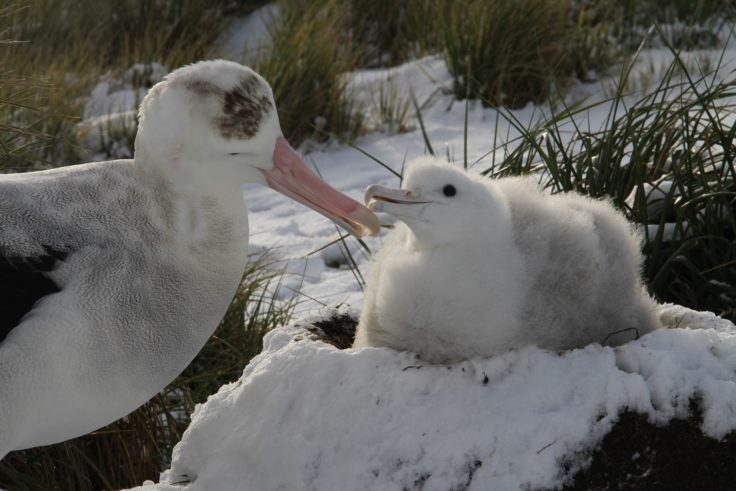
We have been seeing leopard seals in the bays around the island, which are visitors from further south. Leopard seals are usually seen throughout the winter season here as the colder conditions spread north from the continent of Antarctica. Cameron, our seal zoological field assistant, goes out daily to survey for these large, marine predators, continuing a research program which began in 1983. A large part of the work now involves photo identification of the individual seals observed here; spot patterns and features such as scars have been used to distinguish each animal since 2005.
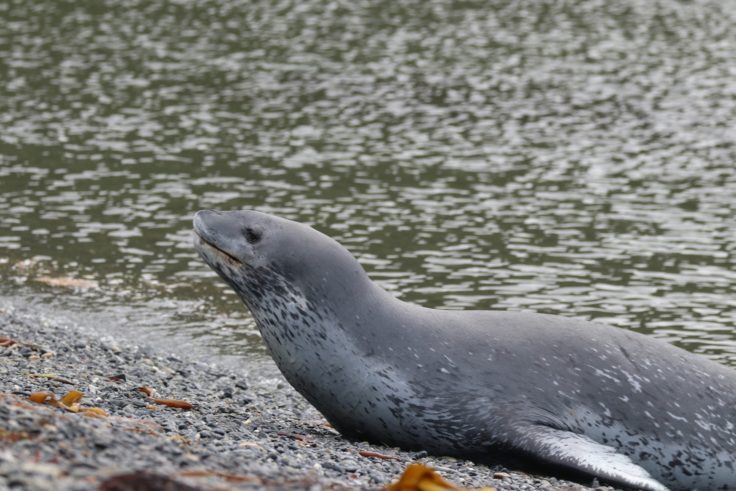
With the ornithological fieldwork quietened down for winter, Freya and I are working hard in the laboratory. Much of this work revolves around identifying and taking biometrics of krill, otoliths (fish ear bones) and squid beaks from diet samples collected during the summer. Most days we will take a walk somewhere around the island. Winter gives us the opportunity to have a more consistent, ‘normal’ daily life.
At the moment, a typical day on Bird Island consists of Freya and I working in the lab or office, Cameron out and about searching for leopard seals, and Iain, our tech, keeping the station running, maintaining our buildings and infrastructure. With the reduced daylight hours it is easy to let that dictate your daily routine but I have found maintaining a consistent work schedule and continuing to get up at the same time each morning very helpful. We don’t quite have the lack of sunrises like the continuously dark Rothera Research Station on the Antarctic Peninsula, but it is dark until almost 11:00am now with dusk settled in by 6:30pm.
This July I am going to be undertaking some extra fieldwork on the wandering albatross parents as funded by Darwin Plus, in partnership with BirdLife International. The project has been working to link habitat preference, at-sea activity patterns and detections (from novel bird-borne radars) to quantify interactions of tracked wandering albatrosses with legal and Illegal, Unreported and Unregulated (IUU) fishing vessels. Learn more about the project here.
Celebrating Midwinter
Later this month we will be celebrating Midwinter’s Day with the rest of the research stations around the Antarctic, something I have been excited about since coming South! This day has been celebrated since the times of the early explorers like Scott and Shackleton and is a way for those of us around the continent to celebrate where we are and the community we are a part of, albeit a somewhat spread out, isolated community!
At the beginning of winter, we drew names out of a hat, then each person on station makes a gift for someone else, secret Santa style. Previous gifts have included clocks, coffee tables, wildlife drawings and even a picnic bench! The day usually ends up feeling a little like Christmas with gift giving, a big roast dinner lunch and general merriment. Throughout the Midwinter week different fun and games are organised, previous winterers have even had a mini Highland Games tournament. Our plans are still being finalised but currently include a chocolate penguin hunt (as opposed to Easter eggs), Midwinter Olympics and the traditional screening of the 1982 film ‘The Thing’.
